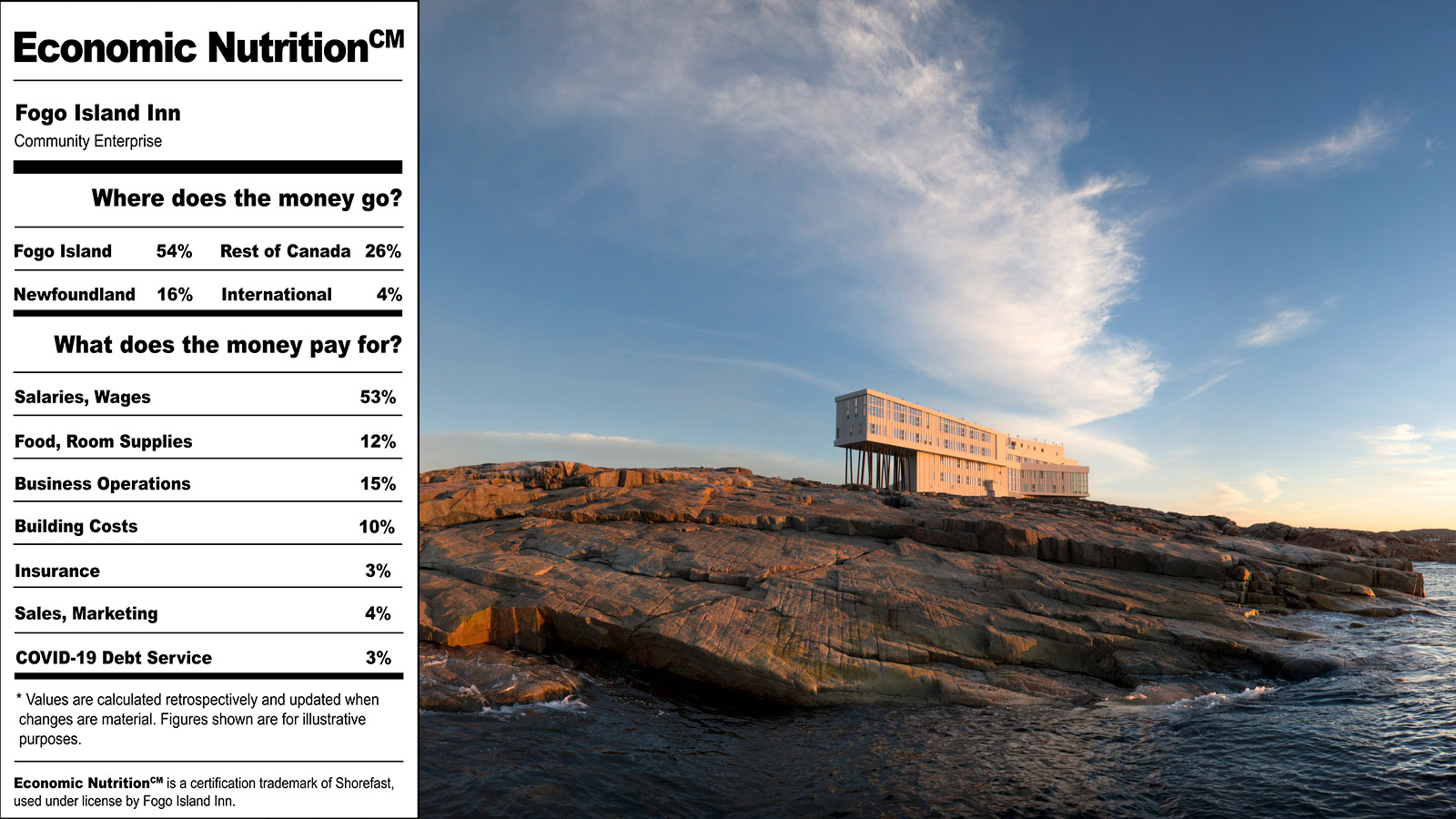Economic Nutrition: How a new methodology is helping businesses show where their money goes
Why It Matters
Investing in Canadian economic sovereignty is a big policy and business priority. Economic Nutrition is a financial innovation tool that can support individual organizations to understand the impact of their financial decisions and supplier relationships.

An East Coast idea that tells you exactly where your money goes when you buy an item or service is being offered nationwide.
Shorefast, which focuses on strengthening local economies, is inviting 13 Canadian organizations to embark on its inaugural Economic Nutrition Certification program.
Each organization will analyze its internal accounting and procurement data to produce what Shorefast calls an Economic Nutrition label, which mimics the style of a food nutrition label.
It “makes local economic impact more visible by publicly displaying where the money goes when someone makes a purchase,” Shorefast says on its website.
“One of the largest areas where our businesses are able to enact economic change is how they spend money,” said Gwen Patrick, financial innovation lead at Shorefast.
“It’s not necessarily where the profits or surpluses are going. It’s really in how we spend and make spending decisions.”
Organizations will use their accounting data to first determine where their suppliers are based, categorizing them into local, provincial, national and international buckets.
For this, Patrick said, they will need to integrate employee and vendor addresses into their existing accounting processes.
They will then categorize their expenses, such as salaries and benefits, materials, sales and marketing expenses, and other pre-set categories, to show what the money is used for.
Once they’ve created their label, organizations will be able to choose how they want to communicate their economic impact to customers, suppliers, staff and other stakeholders.
The label is not only a “very condensed version of a financial statement,” but also supports organizations to “make informed purchasing decisions to support their local economy,” Patrick said.
Shorefast launched the Economic Nutrition Label in 2018 on Fogo Island, a coastal fishing economy in Newfoundland and Labrador.
The charity has launched several community businesses on the island, including a hotel, a fishery, and a home furnishings workshop.
Using Economic Nutrition methodology, Shorefast has analyzed the local impact of each business; for the hotel, Fogo Island Inn, more than half of the money stays on the island, and 96 per cent flows within Canada. The Inn spends 53 per cent of its money on salaries.
More organizations have been reaching out to Shorefast about measuring their own Economic Nutrition, given the recent tariff turbulence in the Canadian economy, said Patrick
“Now more than ever Canadians are looking for ways to invest locally and ethically,” Shorefast wrote. “This shift is here to stay, no doubt encouraged by the recent Buy Canada policy.”

What is the value of accounting data?
Most organizations in the public, private and charitable sectors will have some sort of software in place for accounting purposes. That data holds the key to understanding a business’s economic impact.
The organizations in the cohort will then need to ensure that their data is of good quality and add in supplementary geographic information before analyzing it.
Among those in the first cohort of the certification program are the Town of Newmarket, Ont., Sussex Ale Works in N.B., and the Mi’kmaw Cultural Foundation in N.L.
Heather Deeth had a long career working in international supply chains before joining Hollyhock three years ago.
Based on Cortes Island, a rural and remote community in B.C., Hollyhock is a physical space hosting retreats and leadership events.
“I know how procurement strategy drives economic development,” Deeth said, adding that Hollyhock is one of the largest employers on Cortes Island.
Partway through the Economic Nutrition certification process, Deeth has already found that the majority of Hollyhock’s costs can be attributed to staff salaries and benefits, with the second-largest category being the cost of running programs.
Most of the money that flows out of Hollyhock also stays on the island itself, as the team tries to source suppliers as locally as possible, Deeth said.
“As a major employer on the island, there is a gift in being transparent about what you’re doing,” she said.

The standardized methodology of the Economic Nutrition label also helps organizations benchmark their economic impact in comparison to others.
For Valérie Vedrines, an Economic Nutrition label can also be an innovative marketing and communication tool.
Vedrines runs Masse Critique, a Montreal-based non-profit working to make the marketing, advertising and communications industries more ecologically sustainable.
Although the push for Canadian sovereignty might be impacting businesses’ procurement decisions and consumers’ choices, it is also leading to “local-washing” and “Maple-washing”, Vedrines said.
Going through the Economic Nutrition certification can make organizations communicate their impact in a “more authentic, transparent and vulnerable” way.
The Shorefast team will be bringing on another cohort of businesses to the certification program in 2026, Patrick confirmed.

